The 2011 MacBook Air (11 & 13-inch): Thoroughly Reviewed
by Anand Lal Shimpi on July 28, 2011 3:25 AM EST- Posted in
- Apple
- Mac
- Intel
- Sandy Bridge
- MacBook Air
- Laptops
The Display: Better than Most, Not as Good as the Pro
When I reviewed last year's MacBook Airs I came away impressed by the displays. The MacBook Air, particularly the 11-inch, was a netbook alternative for many. You got much better performance (at a higher cost of course) than any netbook but in a great form factor. Compared to those ultra cheap machines, the 11 and 13-inch MacBook Air from 2010 had great displays.
This year things are a bit different. Equipped with Sandy Bridge CPUs these new MacBook Airs can still be ultraportable competitors, but for many the new systems are faster than their current notebooks. If you bought a MacBook Pro in 2008, even the 11-inch MacBook Air is faster with its 1.6GHz CPU. Last year's models may have been great ultraportables, but this year's Air lineup are great notebooks. As a result we have to compare their displays to both the low end of the PC market as well as the high end of the Mac market.
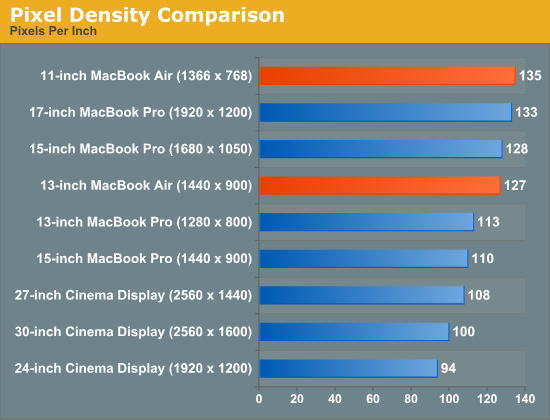
First the bad news. The 13-inch MacBook Air Apple sent me for review has a noticeably dimmer panel than the one I reviewed last year. The 2010 model I reviewed was 21% brighter at its highest setting. This will vary depending on the panel you get (and the panel you had) but with the wrong combination you'll be left with a noticeably dimmer display. That being said, even at 354 nits the 13-inch MacBook Air is far brighter than most PC notebooks. Not to mention the fact that 354 nits is often a bit too bright, I usually find happiness at around 200 - 250 nits.
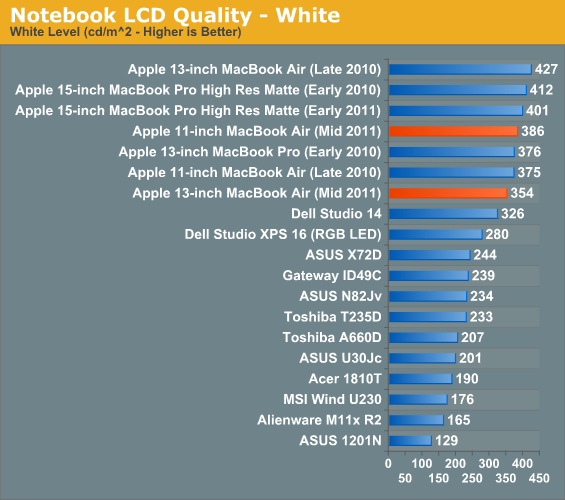
The 11-inch MacBook Air on the other hand was slightly brighter than the one I reviewed last year. Don't get too excited though, my personal 11-inch MacBook Air puts out 408 nits at max brightness - 6% more than the new 2011. It's going to be luck of the draw here but don't expect these new panels to be significantly brighter than last year's. If anything, there's a good chance that your new MacBook Air will be dimmer than your old one (if you're a yearly upgrader that is).
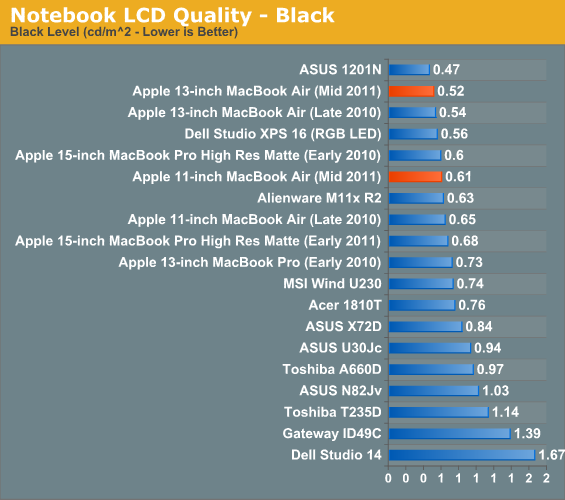
Black levels are slightly better on the 13, but not enough to overcome the drop in brightness. Contrast is down as a result on the 13, but up on the 11. Both are still in a league of their own among notebooks in this price range. As far as brightness, black levels and contrast are concerned, the MacBook Air is pretty much on par with the MacBook Pro.
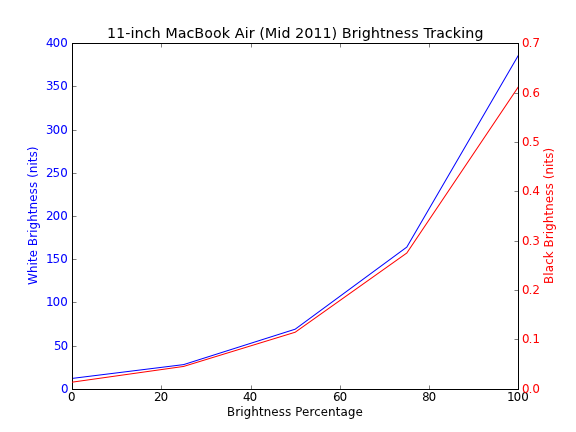
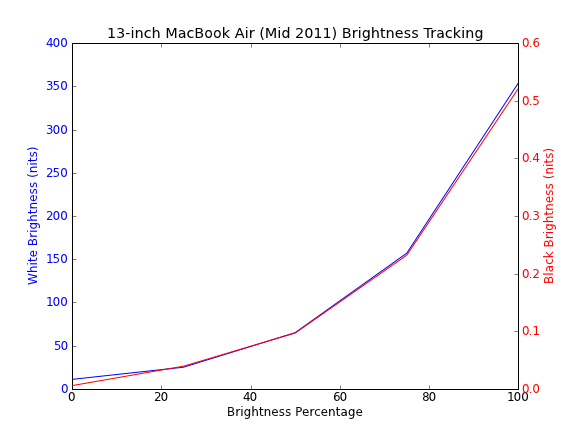
Where the Air stops filling its bigger brother's shoes is in viewing angles and color gamut. The MacBook Air uses a lower quality TN panel than what's in the MacBook Pro, causing viewing angles to suffer.
Viewed straight on the Air's panel looks great. It's bright and has a reasonable ~6800K white point calibrated from the factory; uncalibrated deltaE is around 8.58 though. Viewed from above colors begin to wash out:
Viewed from below there's some color shift and the screen gets much darker.
Left/right viewing angles are pretty good though, colors don't change you just lose a bit of brightness.
The issue with poor vertical viewing angles is particularly a problem on these ultra portables since there's a good chance you'll have to tilt the screen back further than normal depending on your desk/seating/lap position. If you're coming from an older MacBook Pro you'll likely be disappointed by viewing angles on the MacBook Air.
Compared to the old MacBook the Air has a much better display, it's only compared to the Pro that you do sacrifice a bit in quality.
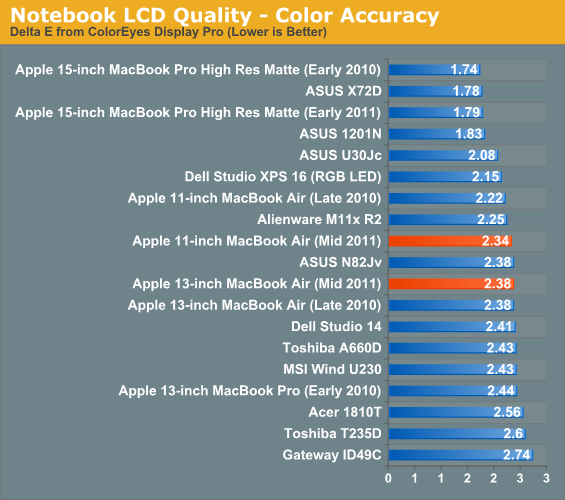
Calibrated color accuracy is pretty good on the Air, although not quite as good as the MacBook Pro. Color Gamut also hasn't improved since last year's Air:
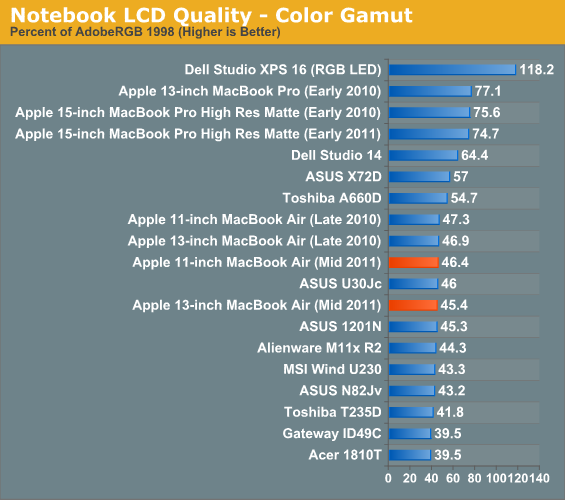
Apple calibrates white point on all of its Macs before they leave the factory. Both the 11 and 13-inch Macbook Air have a white point around 6800K that tracks consistently across all brightness settings:

There are at least two different panel vendors in the new Airs, both of my Airs used panels from the same company though:
LTH133BT01A03
LTH116AT01A04
It's quite possible that users with a different panel could have a different experience than what I've published here.


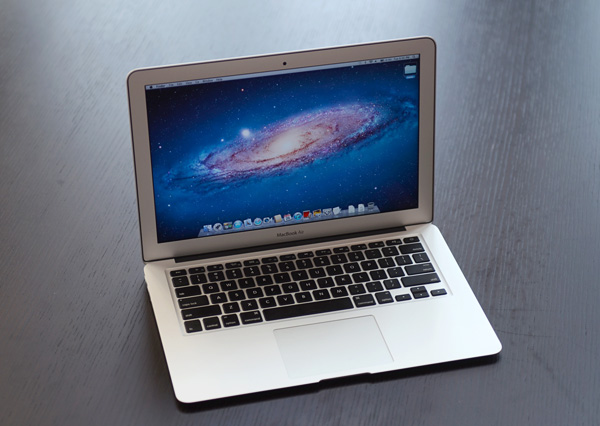
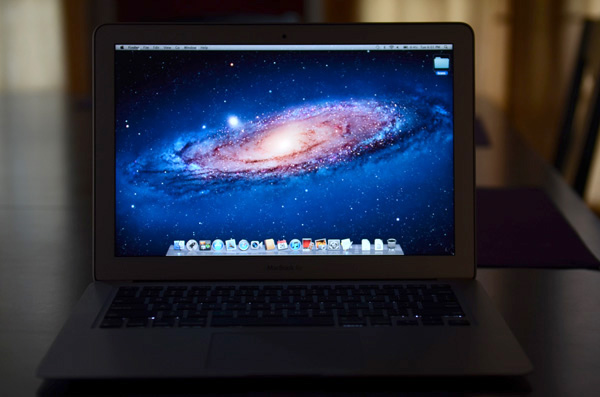
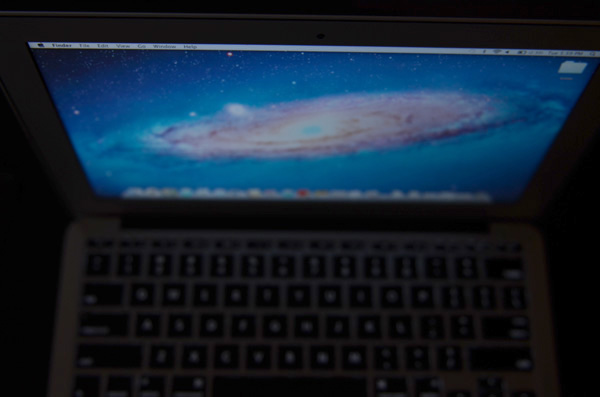
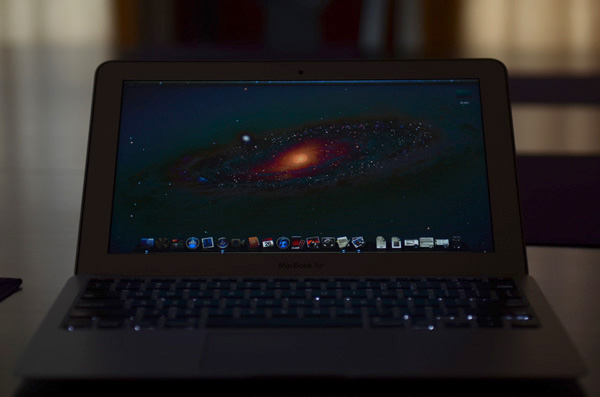
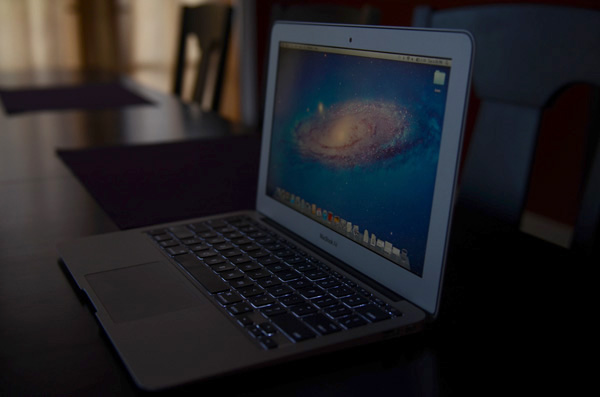








103 Comments
View All Comments
name99 - Thursday, July 28, 2011 - link
"The WLAN solution in the Air is capable of up to two simultaneous spatial streams, topping out at 270Mbps.
In practice this results in peak performance over 802.11n at around 128.8Mbps.
"
This is a horribly misleading way of stating the issue. It implies that Apple or the chipset or something are somehow defective, in only delivering 50% of the available performance.
The ACTUAL problem is the 802.11 MAC & protocol, which wastes about 50% of the available bandwidth doing god knows what. The packets that go out, go out at of order 270Mbps, but 50% of the time packets are not going out.
This would be a good topic for a future AnandTech article --- just what the hell is the 802.11 MAC doing that wastes so much airtime?
A useful issue to discuss in the same article is the following:
I read once that there was an advanced option in the 802.11n MAC that reduced this wasted time to only (hah!) about 25%, but I have never seen details on this (and I have looked). Is it real? If it is real, does anyone support it?
ninjaquick - Thursday, July 28, 2011 - link
The relevance of SSDs is really only synthetics and low ram high cache situations. I do like seeing these get beat out squarely by an i3 in pretty much everything else in the win7 tests.bji - Friday, July 29, 2011 - link
How do you draw that conclusion about SSDs?KPOM - Friday, July 29, 2011 - link
They only get beaten out by the i3 in the 3D tests, which are driven by the GPU, so it's more fair to say that the HD 3000 gets beaten out by a discrete graphics adapter, which is no surprise. The Airs handily beat out the i3 in the CPU-intensive benchmarks.I've used an SSD since November 2008 and won't go back. I still need to use a HDD-equipped machine at the office, and I can't stand how long it takes to restart, shut down, or do anything disk intensive. The SSD made the Core 2 Duo-equipped MacBook Air tolerable in a world of i3s, i5s, and i7s. The Sandy Bridge-equipped MacBook Air with SSD makes it that much better.
Baron_Fel - Thursday, July 28, 2011 - link
When are you guys going to review the new Vaio Z? I want to know if that external GPU is worth anything.TwoStreetCats - Thursday, July 28, 2011 - link
I'm a very happy owner of the 2010 11" version and have to say that the form factor was the primary draw for me as I travel quite a bit. It fits quite nicely in the hydration pocket of my backpack and I hardly know that I have it with me.The only thing that is occasionally frustrating is the vertical resolution as the article mentions.
However, I use Mac Screen Rotate to rotate the screen and touchpad for portrait viewing when browsing or viewing pdf's and this problem is solved. If size and weight are serious factors for you, I highly recommend trying this out with the 11" before you decide that you need the 13".
www.macscreenrotate.com
bji - Friday, July 29, 2011 - link
If the TDP of the processor + graphics is 17W, why does the Macbook Air even need a fan?My Panasonic Y2, which I still use because I can't find a laptop I like better (just sold a Sager NP5160 that I only owned for 2 months because I couldn't stand the fan noise or the horrible keyboard), has a 22 W max TDP on just the Pentium M 1.4 Ghz processor. Probably the crummy Intel integrated graphics doesn't add more than a few watts but together they must be at least 25 W.
And yet, the Macbook Air, with a 17 W processor + graphics combined, has a fan. There is plenty of aluminum in the body of the Macbook Air to act as a heatsink, why does Apple even need to put a fan in there? If the Y2 can go fanless, surely the Air can.
bji - Friday, July 29, 2011 - link
OK, turns out the Pentium M in my Panasonic Y2 is the 10 watt Pentium M 738, not the 22 watt Banias Pentium M.The Intel 855 GME chipset is listed at 3.2 W.
Is it really the case that 10 W can be fanless but 17 W cannot?
tipoo - Friday, July 29, 2011 - link
Might be possible in 17w, but it already gets pretty hot WITH a fan.hellknight - Friday, July 29, 2011 - link
I couldn't believe that Intel included AES instruction set in such low voltage chips. Even the base model has those.. This is something very great.. It would be great for all Truecrypt users..